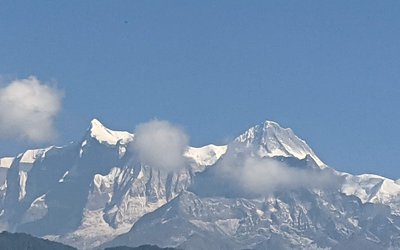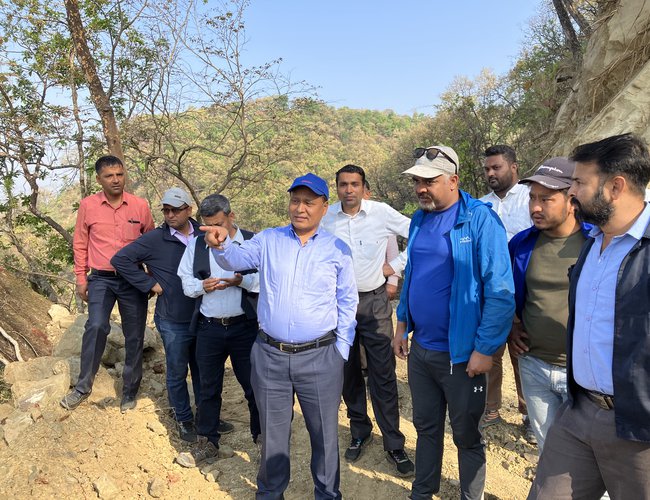
The strategically significant Hetauda-Inaruwa 400 kV Transmission like project, which was due to be finished in 2017, is still unfinished. Following a Supreme Court ruling, the 220 kV Bharatpur-New Butwal Transmission line is finally cleared after years of disruptions.
The work to erect the final tower has already been delayed for two months as a result of the official Ministry of Forest and Environment notification delaying approval to remove the trees, interfering with the transmission of extra electricity from Bharatpur to New Butwal.
The installation of 400 kV transmission line substations in Lapsifedi has been impeded by a small number of people, preventing NEA from transferring extra electricity produced in Khimit, Tamakoshi, and Bhotekoshi to Kathmandu Valley.
The valley will experience an electrical shortage starting the following year if the building work is not completed promptly. NEA presently uses a 40-year-old, 132 kV east-west transmission line because there isn't a more powerful transmission line available to carry the electricity from east to west. Overpowering has frequently disrupted the line, causing tilting and occasionally hours-long power outages.
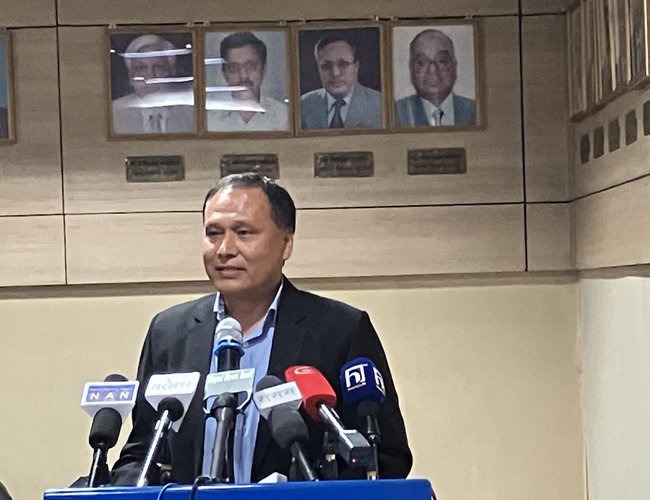
Any delay in the MCC-backed 400 kV Lapsifedi-New Butwal transmission project will negatively affect Nepal's distribution and supply of energy.
The extension and enhancement of the distribution system has also run into opposition from the general public and concerned politicians, in addition to this huge transmission project. The public is opposed when NEA seeks to add transformers to increase capacity and quality.
The initiative to install underground cables in the Katmandu Valley to improve distribution is being hampered by the Department of Road on a number of fronts. The agency has released a notice warning the public that it is not permitted to install any subterranean cables in the valley.
After a brief power outage, however, a flurry of social media handlers assailed MD Ghising and accused him of being ineffectual. Nobody takes responsibility.
Frequent electricity tipping is typical at a time when the majority of significant transmission and distribution improvement projects are being delayed as a result of obstruction put forth by officials of concerned ministries like the Ministry of Forest and Environment and the Ministry of Land Reform, Departments of Roads, local governments, and the general public.
The tipping has been so frequent in certain places that it brings up memories of load shedding. It's interesting to see that former NEA officials of various higher ranks, including former MD Mukesh Kafle, are all the ones strongly criticizing MD Ghising.
With positive attitude and time to time interventions from Prime Minister Pushpa Kamal Dahal, MD Ghising is somehow accelerating the pace of transmission line and distribution improvement projects. As NEA is under a fire for frequent tipping and no one come to defend NEA, MD Ghising organized a press meet explained entire power scenario including dissemination of fake information linking export of energy to frequent tipping.
MD Ghising stated that despite the fact that the trees on the Kaligandaki corridor and the Bardghat-New Butwal transmission line have been cut for the past 4-5 years, the cutting order has yet to be issued. .
"We will still be unable to obtain a tree-cutting order five years after the Council of Ministers' decision." No agreement has yet been reached despite the fact that money has been gathered for the use of forest land and tree cutting. How can NEA finish the job when no one is helping us? "There will be a major disaster if we do not increase our investment."
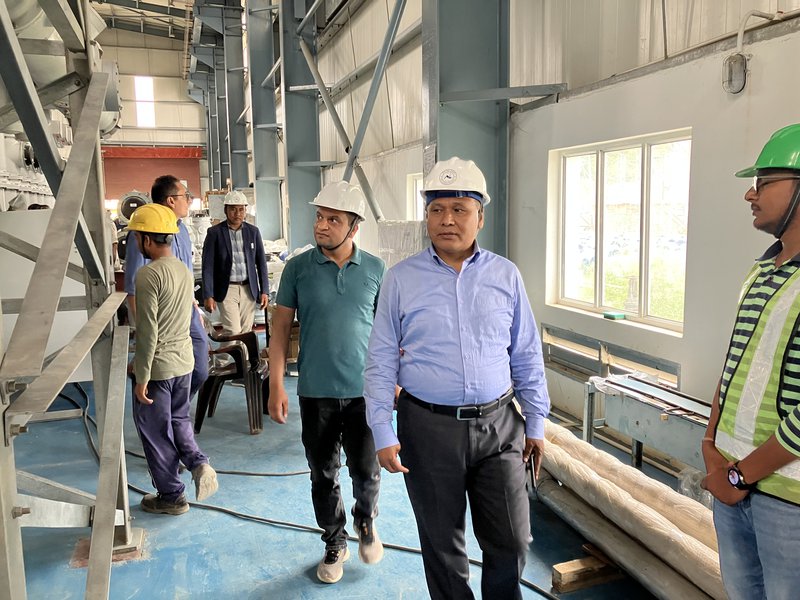
Provision of Electricity
Nepal now uses 1900 Megawatts (MW) of electricity, even though its installed capacity for power production is 2700 MW.
The installed capacity will reach 4,843 MW in fiscal year 2023/024, when Nepal's peak consumption exceeds 2,482 MW, according to the NEA's prediction.
The capacity of Nepal's power supply transmission and distribution lines has not expanded in accordance with the rate of electricity generation. As a result, there is concern that Nepal, which has already been forced into load shedding owing to low production, could experience it once more in the future due to a lack of infrastructure for the transmission and distribution of power.
The nation-wide electrical supply issues that have been occurring over the past few months are now severe enough to cause such concern. The issue of power supply, particularly in the western portion of Nepal, has run its course.
Returning Of Load Shedding
MD Ghising has already issued a warning that there may not be enough electricity available next year if all stakeholders do not help to finish the transmission line infrastructure projects that are now under construction. His cue is the anticipated load shedding for the following year.
The NEA has previously issued warnings of this nature. Last January, NEA issued a warning that load shedding would return to the Kathmandu Valley if it was not allowed to operate in accordance with the plan after being persuaded not to build a transmission line and substation in Lapsiphedi. Despite the stoppage of the transmission line developments in Lalitpur, MD Ghising has been warning of a "return" to load shedding in the area.
In his previous position, MD Ghising had cleared a lot of barriers and finished significant transmission lines. Although measures have been carried out to reinforce the infrastructure, the authorities has failed to eliminate the barriers in their way.
According to MD Ghising, "work has been halted while attempting to create transmission and substation infrastructure, due to compensation conflicts in certain regions, while there has been an issue with forest and tree cutting in some places.
"Before 2016, the main cause was the lack of electricity, but now the load shedding has returned, not the lack of production, but the lack of infrastructure could be the reason," stated MD Ghising.
The Tamakoshi region generates the most power, according to MD Ghising. There is a chance that loads shedding would reappear if the energy flowing from there does not reach Kathmandu and the western part of Nepal.
Electricity demand management is getting harder, according to MD Ghising, because the transmission system is getting smaller. Locals have erected obstructions all over the place. The barrier was lifted, but it caused the 132 kV transmission line upgrading project in Sukouli, Hetauda Sub-Metropolitan City-15 of Makwanpur, to stall for two weeks. The obstruction was removed as a result of MD Ghising's visit and his discussions with locals.
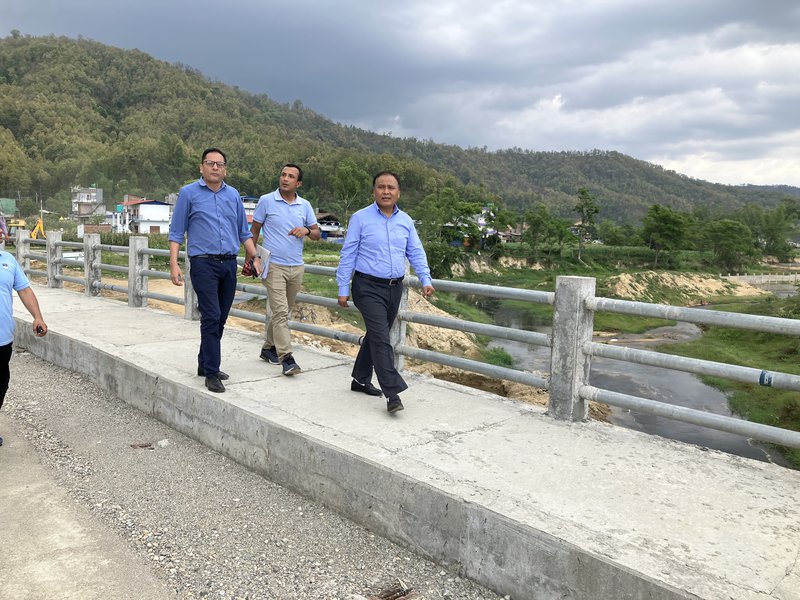
The 136 km segment from Hetaunda to Dhalkebar substation in Dhanusha will see the Nepal Electricity Authority replace the old low capacity wire with a new high capacity wire in order to boost the capacity of the East-West 132 KV double circuit transmission line. The transmission line's current capacity is roughly 200 megawatts, but it may be raised to about 400 megawatts by switching the conductor.
The local power supply will be improved, electricity produced in the west can flow to the east, and excess electricity used in the nation can be exported to India via the Dhalkebar substation, according to the authorities.
For the authorization to cut down trees along the 220 KV power line between Bardghat and New Butwal, the authority is circling the forest service. By refusing to perform the work that takes two days to accomplish, MD Ghising has publicly accused the forest of significant tardiness. The authority is unsure that the forest will aid in the succeeding process, despite the department just giving authorization.
The operation of the Kaligandaki Corridor's Dana-New Butwal section has been problematic as a result of the delay in this development. This has prevented projects like Mistrikhola connected to the Kushma-Dana part of Kaligandaki from getting the market for their electricity.
In addition, compensation is being provided for the construction of the 400 kV Hetaunda-Dhalkebar-Inaruwa transmission line, which will transport electricity from east to west. The backbone of energy transmission is getting worse and sicker due to the conflict over this high-capacity line, which is also necessary for electricity trading with India.
Sending the power from the Upper Tamakoshi project from Dhalkebar to the east and west for domestic use is difficult because this transmission line, whose construction was began 11 years ago, has not yet been completed. The capacity is inadequate because Dhalkebar West only has 132 KV transmission lines at this time.
In the Makwanpur, Hatia, and Jiyajor areas of the Lalbandi Municipality of Sarlahi, Hetaunda Sub-Metropolitan Wards 15, 16, and 17 have been blocking construction of the transmission line that passes through 10 districts for almost 6 years.
The Hatia area has 14 towers, the Thanabharyang area has 2 towers in Hetaunda sub-metropolitan ward No. 11 and the Jiajor area has 8 towers. To pass the line to the substation at Thanabharyang, 2 towers must be built. There will be an impact on 46 homes constructed on Ailani land.
The purpose of these lines is to transport power produced by projects constructed along the eastern river corridor, particularly the Upper Tamakoshi, to Birgunj and West Nepal. However, the authority is in difficulties because these lines could not be finished on schedule.
According to Ghising, the Birgunj Industrial Corridor and Banke's Kohalpur district experience some issues with power delivery during the evening peak due to a shortage of capacity in the transmission and distribution system, but the electricity hasn't been exported because of power outages.
There is a problem with the electricity supply as a result of local opposition, court interim orders, a delay in tree felling approval, and other considerations.
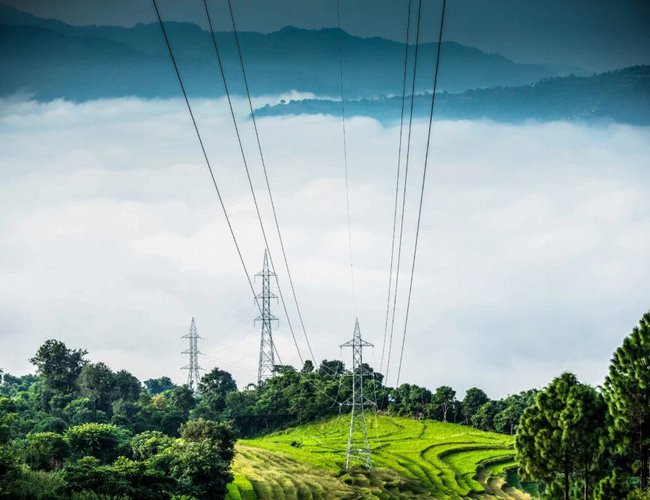
Kathmandu’s Energy Demand
In the Kathmandu Valley, the demand for electricity has surpassed the maximum demand, which was 500 megawatts. Without substations, the Nepal Electricity Authority will not be able to create the transmission infrastructure necessary to fulfill the 2,000 megawatt demand in the Kathmandu Valley.
Additionally, Kathmandu city lacks the necessary transmission infrastructure to receive the electricity from the Marsyangdi and Trishuli lines. The 220 kV transmission line to Matatirtha does not have a transmission line connecting it to the substations in the valley's inner cities. Utilizing the electricity that comes from the valley's long and narrow side is another issue.
A issue with one substation in the city makes it difficult to deliver energy from another location, even though the capacity of the transformers in the valley has been increased. This is because electricity cannot be sent easily from the ring (outer distribution cycle). According to MD Ghising, "We have started work to increase the infrastructure's capacity in response to the increasing demand."
In order to transport and distribute the electricity generated by the hydroelectric projects in the catchment areas of the Marsyangdi and Trishuli rivers to Kathmandu, a 220 KV substation is also being built in Matatirtha. Getting the electricity from this substation to Thankot, Satungal, and Gurjudhara in addition to Bhaktapur presents additional challenge.
According to MD Ghising, completing the Thankot-Chapagaon-Bhaktapur line will create a ring of 132 KV transmission lines in Kathmandu, Lalitpur, and Bhaktapur. This would enhance the consistency of the power supply and the quality of the voltage. However, it was unsuccessful.
Huge Investment
Huge investments must be made for the plan to operate, but the authority has struggled with a shortage of funding. The Authority is unhappy because the Ministry of Finance is not only not interested in giving the Authority enough resources, but is also robbing it of profits by announcing various discounts.
Only 7 billion rupees of the nearly 100 billion rupee demand for transmission and distribution were allocated by the Ministry of Finance. Nepal has promised to have zero emissions by 2045, but their budget is merely a peanut.
The government's decision to give a very small budget for the upcoming fiscal year, despite the fact that a sizable investment is simply needed for the building of a transmission, distribution system, and substation, has further angered the NEA. It was believed that the authority had turned a profit and that additional investment was unnecessary. He declared, "This way of thinking won't get us anywhere. The practice of withholding funding when a significant investment is required won't aid in the growth of the nation's energy sector.
In order to strengthen the system, the Nepal Electricity Authority plans to invest 8.5 trillion over the next five years. The authority has now begun the 4.37 trillion project implementation. Furthermore, preparations have been made to move forward with further projects totaling nearly $4 trillion.
Despite the fact that improvement work has already begun, the authority is having trouble because of several barriers. Demand management is a top priority, and our system also needs to assure energy security, according to MD Ghising.
The NEA has made investments totaling more than one trillion rupees from recent gains. If the expense had not been made, there would have been a load shedding issue. The government requests lower consumer power bills and investments in dependable and high-quality energy supply when the NEA is not provided a budget. MD Ghising questioned, "How can reliable electricity be supplied in such a situation?"
In response to recent comments made on social media and in the press, MD Ghising asserted that NEA hasn't ever interrupted power to India in order to export electricity.
According to MD Ghising, it is incorrect that the domestic electricity supply has been cut back in order to export to India. MD Ghising asserts that "the nation's electricity generated will be consumed domestically first and exported only as surplus product."
The transmission and supply systems must be constructed for continuous supply. MD Ghising needs all of our support as he fights a battle alone.

Keshab Poudel
Poudel is the editor of New Spotlight Magazine.
- BEEN: Honoring The Contribution
- Oct 22, 2024
- Nepal Commemorates 7 October And Calls For Release Of All Hostages Including Bipin Joshi
- Oct 07, 2024
- JAPANESE ENVOY KIKUTA YUTAKA: Charismatic Diplomat
- Sep 25, 2024
- POLITCS: Do Or Die
- Sep 13, 2024
- OLI’S INDIA POLICY: Nationalist Rhetoric, Anti-Nepal Outcomes
- Sep 11, 2024












